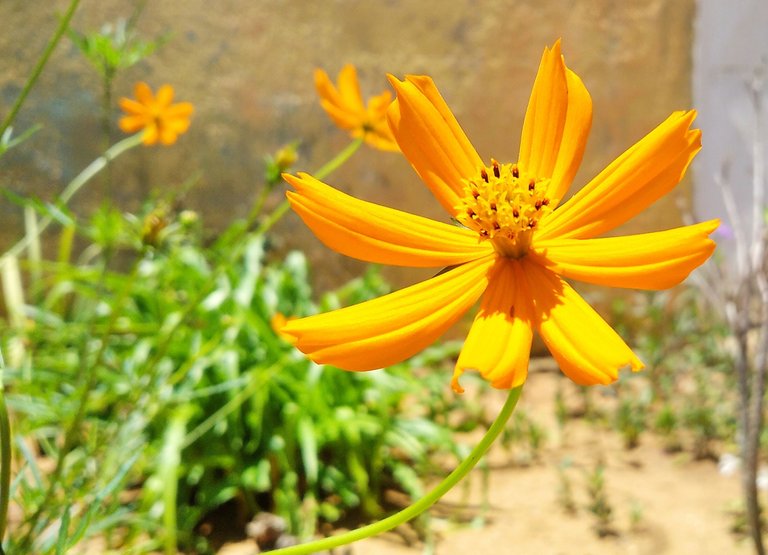
Saludos amantes de la fotografía y la naturaleza
Greetings photography and nature lovers
Sencillez y belleza son dos características que podemos admirar comúnmente en muchas flores que se cruzan en nuestro camino cada día, tal es el caso de esta sencilla pero hermosa flor que suele habitar en muchos jardines, conocida como Cosmos sulphureus.
Sencillez y belleza son dos características que podemos admirar comúnmente en muchas flores que se cruzan en nuestro camino cada día, tal es el caso de esta sencilla pero hermosa flor que suele habitar en muchos jardines, conocida como Cosmos sulphureus.
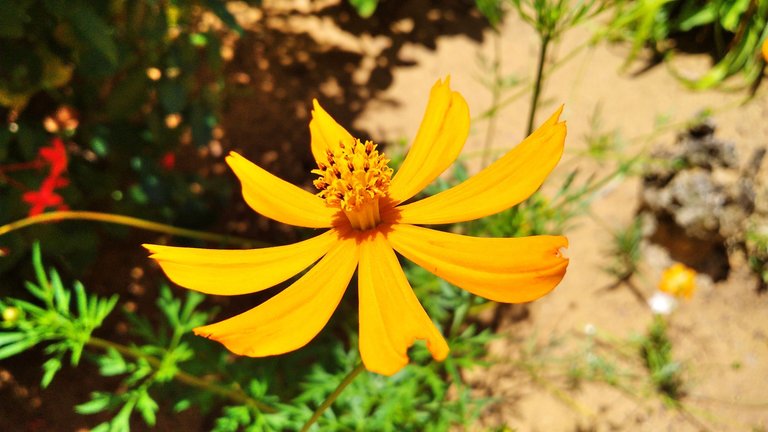
Según su orígen etimológico, el nombre sulphureus viene del latín sulphur, que significa sulfúreo, es decir, proviene del azufre o que es similar en color u olor a este elemento, haciendo referencia a sus flores.
According to its etymological origin, the name sulphureus comes from the Latin sulphur, which means sulphurous, that is, it comes from sulfur or is similar in color or smell to this element, in reference to its flowers.
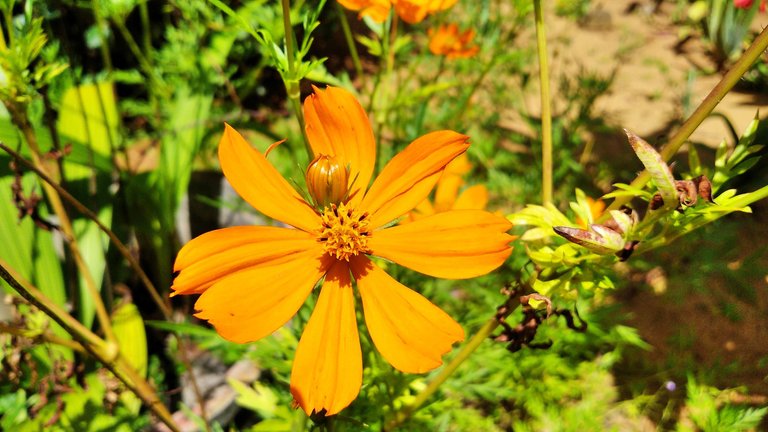
Son plantas que se utilizan en parterres y jardineras, mientras que las flores con tallos largos también pueden utilizarse como flores cortadas. Se pueden encontrar en varios colores amarillos o anaranjados.
They are plants that are used in flowerbeds and window boxes, while flowers with long stems can also be used as cut flowers. They can be found in various yellow or orange colors.
Scientific name: Cosmos Sulphureus Common name: Cosmo yellow or orange Class: Magnoliopsida Family: Asteraceae
Nombre científico: Cosmos Sulphureus* Nombre común: Cosmo amarillo o naranja Clase: Magnoliopsida Familia: Asteraceae
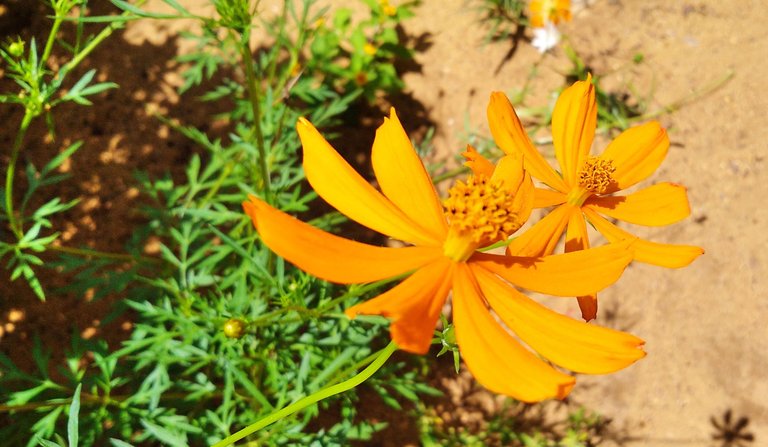
Tienen una característica especial para su mantenimiento, y es que necesitan tener exposición al sol, para florecer más abundantemente, pero aun así necesitan un riego moderado, además de que pueden crecer en un suelo poco ácido o neutro.
They have a special feature for their maintenance, and it is that they need to have sun exposure, to bloom more abundantly, but still need moderate watering, plus they can grow in a little acidic or neutral soil.
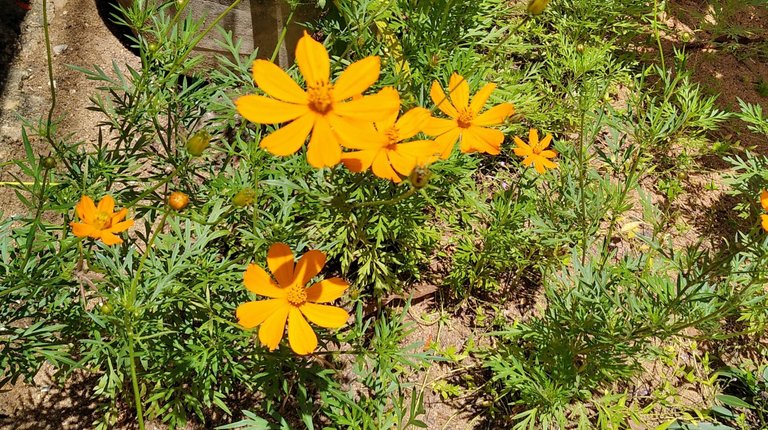
Es originaria de Centroamérica, específicamente de México, por lo que se ha extendido a varias partes del mundo. Suelen crecer entre treinta y noventa centímetros de altura, pero a veces pueden alcanzar hasta 1,5 metros de altura.
It is native to Central America, specifically Mexico, so it has spread to various parts of the world. They usually grow between thirty and ninety centimeters high, but sometimes they can reach up to 1.5 meters high.

Otras peculiaridades de esta flor es que suele ser muy atractiva para la mariposa Cosmos Coster, asimismo suele ser comparada con la planta Cosmos caudatus, pero la diferencia es que sus flores son de color rosa y el sabor de sus hojas es similar al del mango, mientras que las de Cosmos sulphureus, no tienen ese sabor.
Other peculiarities of this flower is that it is usually very attractive to the butterfly Cosmos Coster, it is also often compared to the plant Cosmos caudatus, but the difference is that its flowers are pink and the flavor of its leaves is similar to that of mango, while those of Cosmos sulphureus, do not have that flavor.
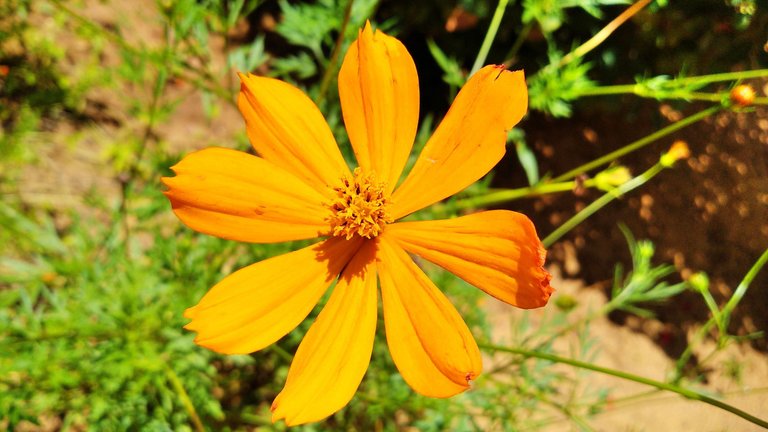
No fue fácil capturar las fotografías e identificar esta flor, ya que el día que las capturé había mucho viento por lo que se movían con mucha facilidad y era difícil tomar las fotos. Además, después de buscar en muchos sitios su nombre científico, logré encontrar varios sitios, que clasificaban esta belleza de la naturaleza como Cosmos sulphureus.
It was not easy to capture the photographs and identify this flower, since the day I captured them there was a lot of wind so they moved very easily and it was difficult to take pictures. In addition, after searching many sites for its scientific name, I managed to find several sites, which classified this beauty of nature as Cosmos sulphureus.
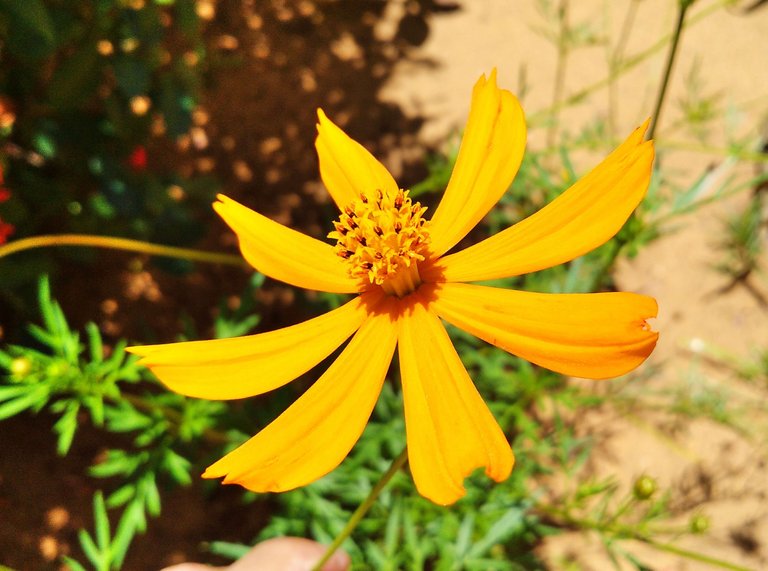



Referencias Bibliográficas / Bibliographic references:
Typicalgardener's Blog - Cosmos caudatus vs cosmos sulphureus. Disponible en: enlace
Para mi Jardin- Cosmos Amarillo o Naranja - Cosmos Sulphureus. Disponible en: enlace
Sanches J. 2020. Las especies del género Cosmos Cav (Asteraceae-Coreopsideae) cultivadas en España. Disponible en: enlace
Las fotografías son de mi propiedad, capturadas con la cámara del celular Xiaomi Redmi 8.
The photos are my property, captured with the camera of the Xiaomi Redmi 8 cell phone.
Traducción realiza en la página web DeepL
Translated using the website DeepL

Thank you very much for your visit and support🙌🙏
Congratulations @abis28! You have completed the following achievement on the Hive blockchain and have been rewarded with new badge(s) :
Your next target is to reach 15000 upvotes.
You can view your badges on your board and compare yourself to others in the Ranking
If you no longer want to receive notifications, reply to this comment with the word
STOPCheck out the last post from @hivebuzz:
Support the HiveBuzz project. Vote for our proposal!